The use of HTML attributes is crucial for styling and structuring your web pages. Specifically, the attributes "class" and "id" play a central role. These attributes allow you to target specific elements within a document and assign them certain styles. In this guide, you will learn how to effectively use these attributes to customize and optimize your web pages.
Key Insights
- The id attribute identifies a unique element in the HTML document.
- The class attribute allows the grouping of multiple elements for style assignments.
- Both attributes can be used together to create specific design options.
Step-by-step Guide
1. Understanding the id Attribute
The id attribute is used to uniquely identify a single HTML element. For an example, let’s assume you have several paragraphs but only want to style one of them. Here’s where the id attribute comes into play. To add an id attribute, simply write id="first" to your chosen element.
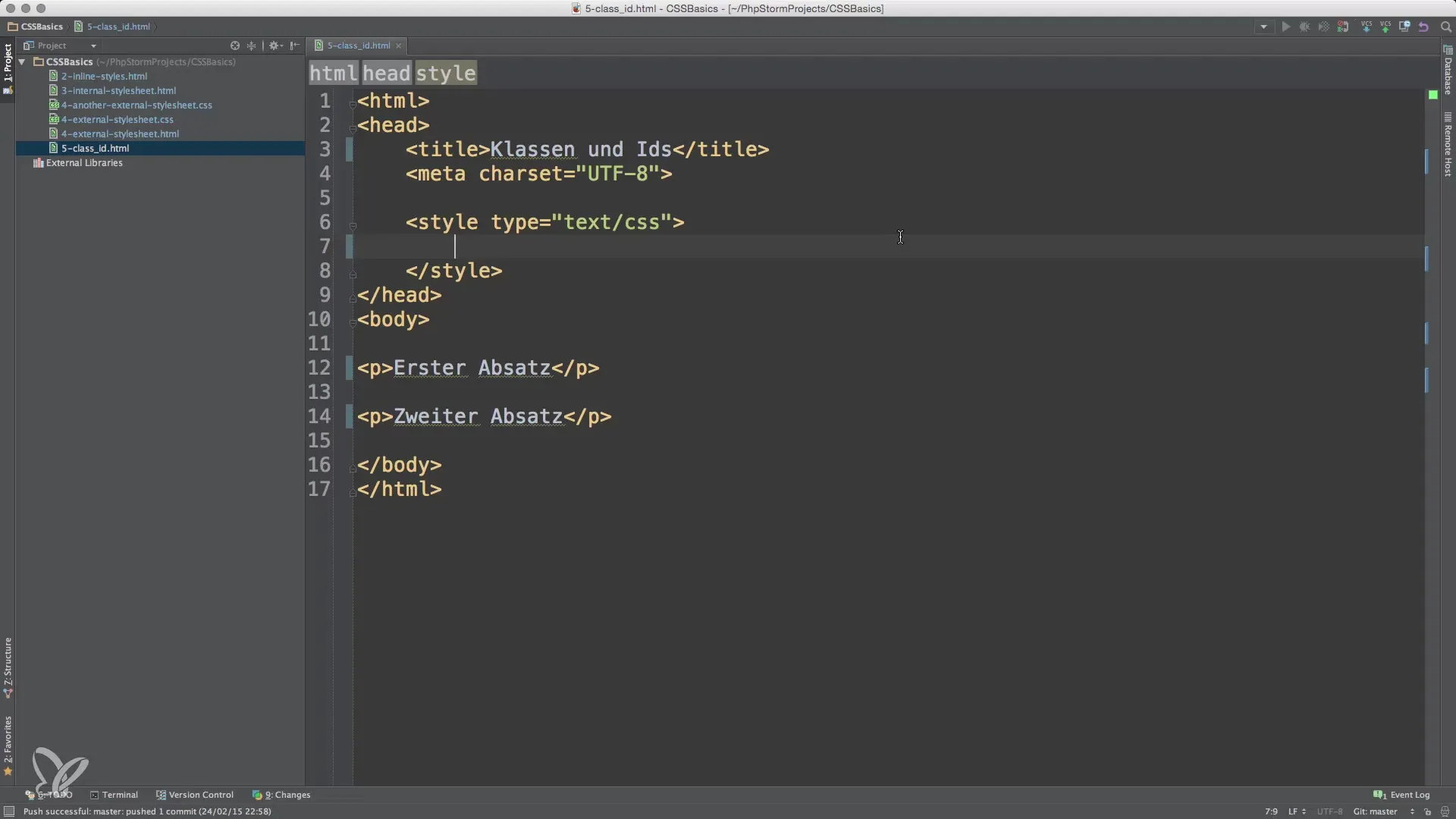
In your CSS stylesheet, you can use the selector with a hash, followed by the id name, to apply styles.
Now we have highlighted the first paragraph in color, while other paragraphs remain untouched.
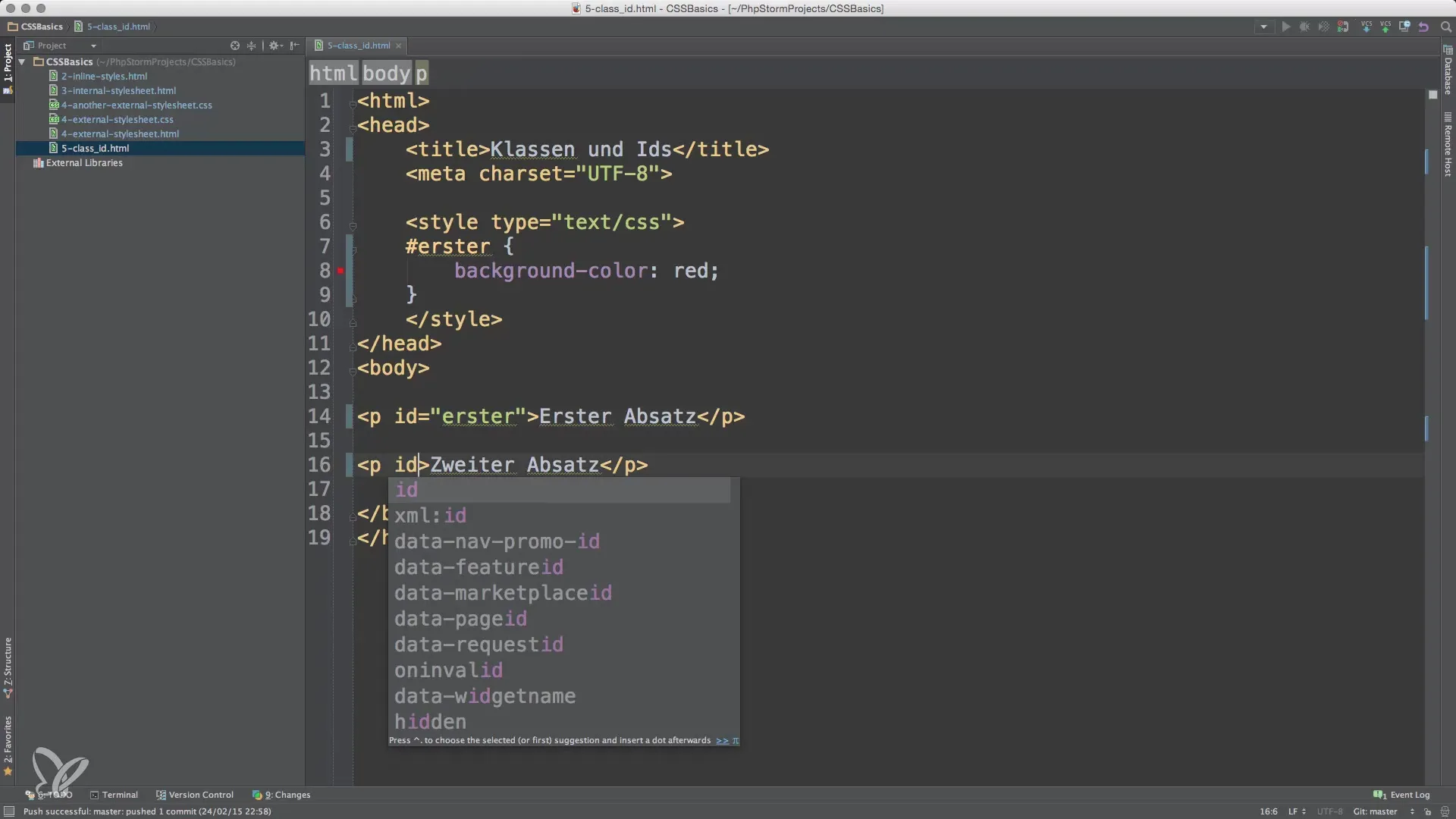
2. The Uniqueness of id Attributes
It is important to note that an id attribute should only be used once throughout the document. If you try to use the same id attribute multiple times, that is incorrect. Uniqueness is essential for assigning styles precisely and keeping the document structured.
You can simply reference the ID in CSS and ensure that the desired styles are only applied to this specific element.
3. Introduction of the class Attribute
In addition to the id attribute, there is the class attribute, which allows you to group multiple HTML elements under a common style. Unlike the id attribute, class can be reused for multiple elements.
In your CSS, you could now use a common class to format the appearance of both paragraphs.
4. Applying Classes in CSS
To work with a class attribute, you use a dot in CSS followed by the class name.
Now both paragraphs have taken on the same background color. This approach saves time and lines in CSS, as you define one style for multiple elements.
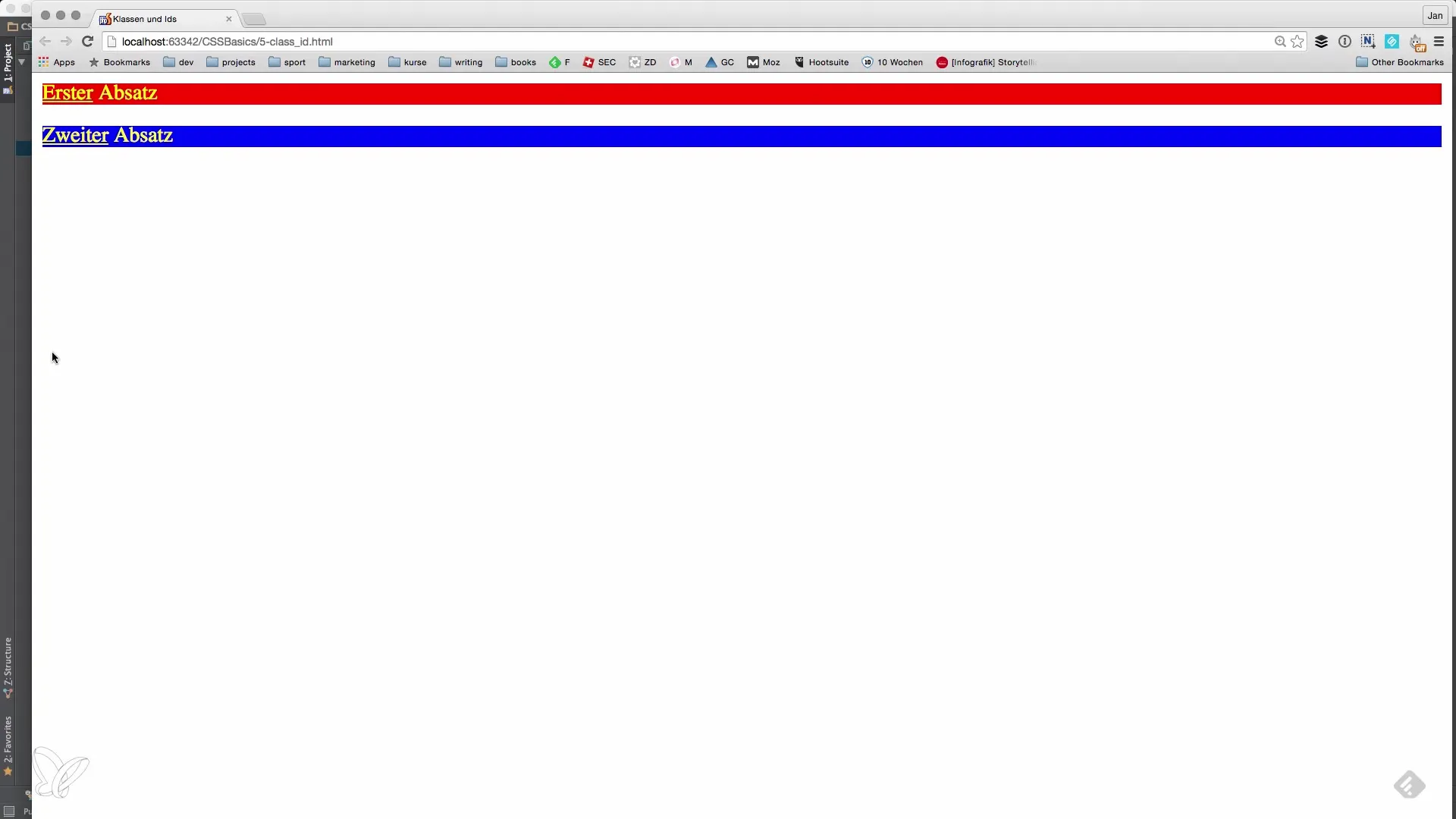
5. Combining id and class
A powerful technique is the combination of id and class. For example, you can assign both a class and an id attribute to an element to define specific styles.
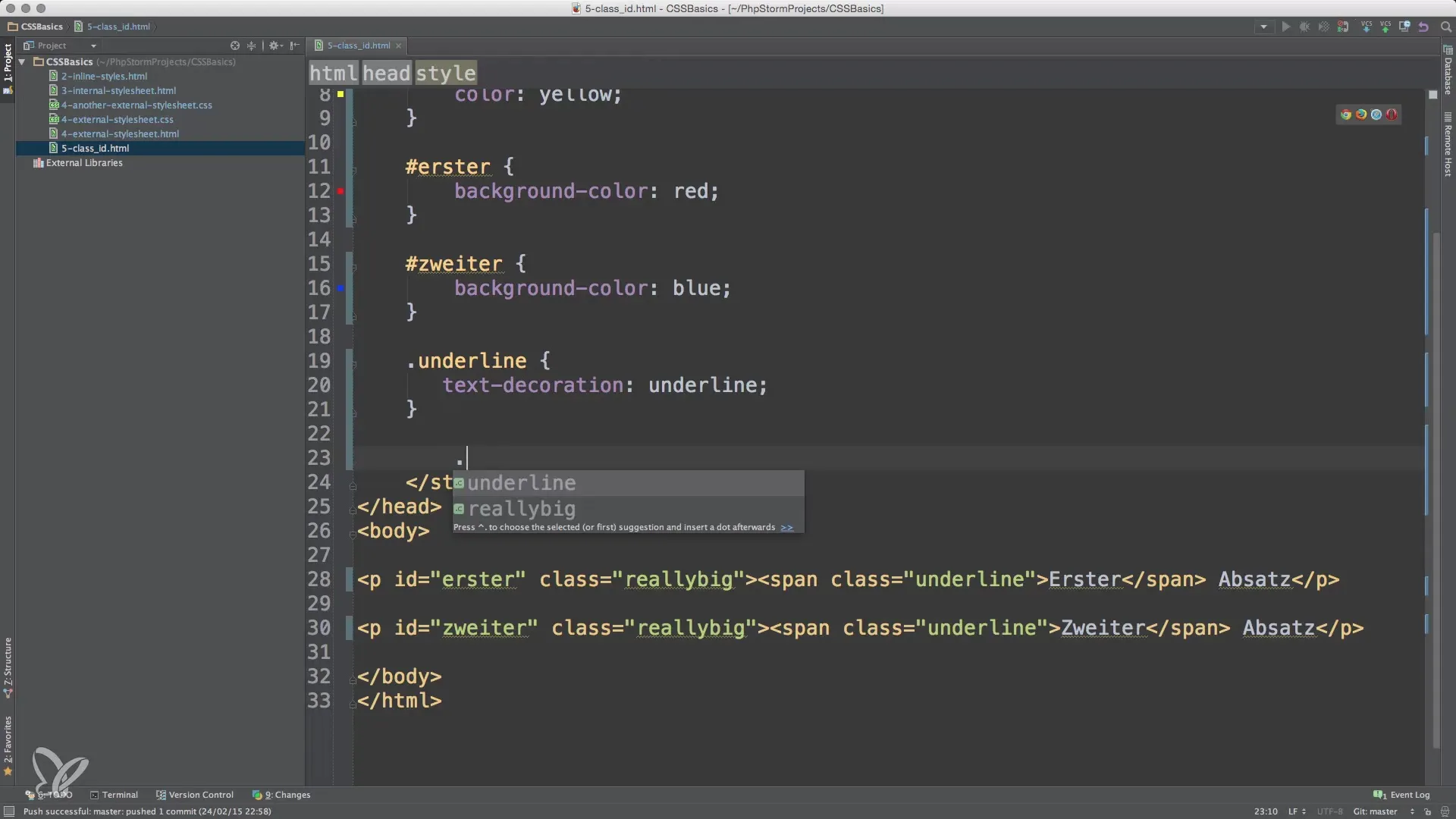
This method allows for more precise control over styling and promotes the reusability of your code.
6. Use of for Highlighting
Another useful element is the tag, which is often used to highlight parts of text. We can use it along with class and id to apply targeted styles.
In your CSS, the class.underline should be defined as follows.
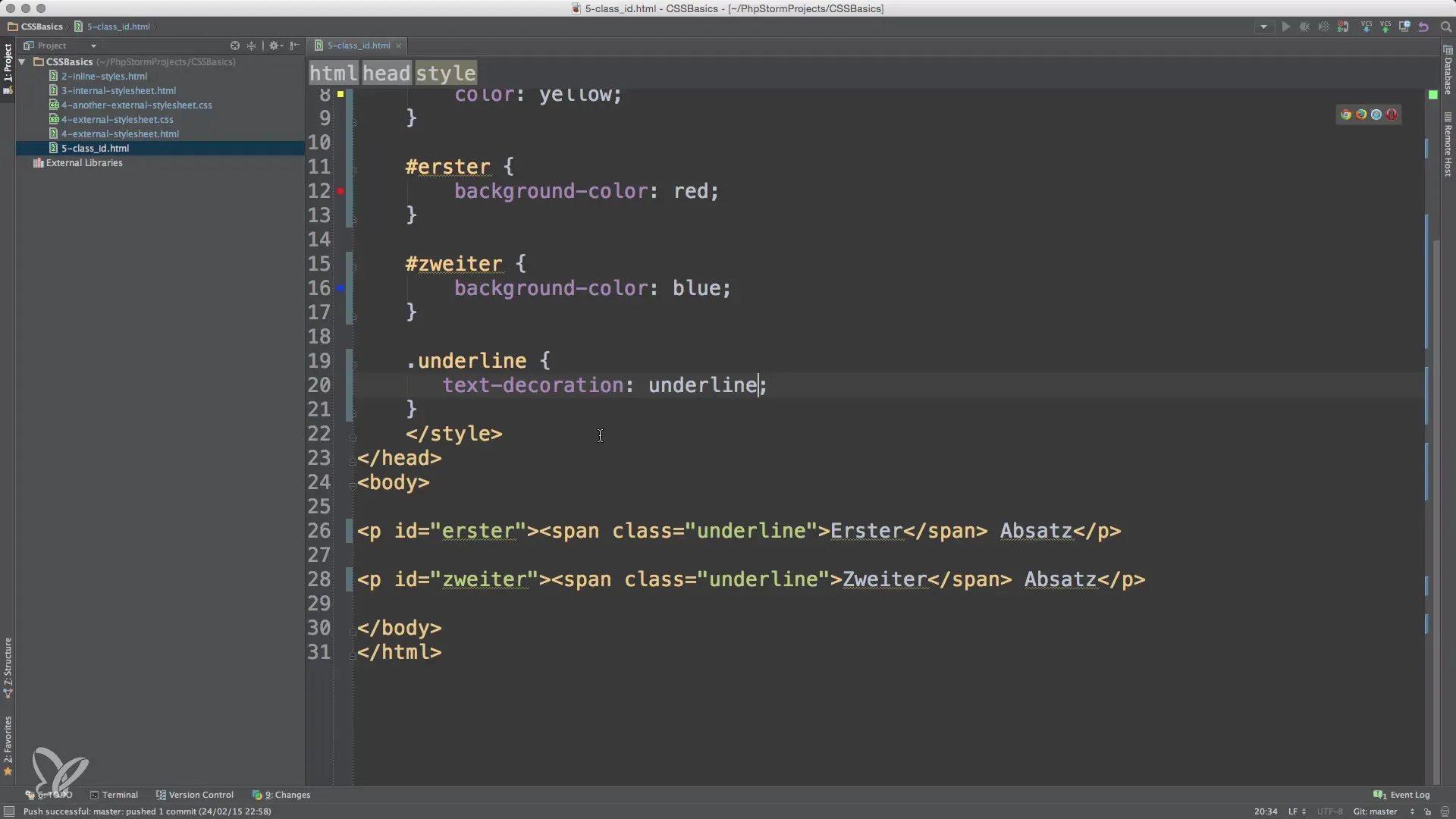
7. Structuring with div Containers
Div containers are another important concept. They help you group and structure content. You can use div containers to design and style different areas of your website.
Here, you give the entire group of paragraphs a container, allowing you to apply styles collectively.
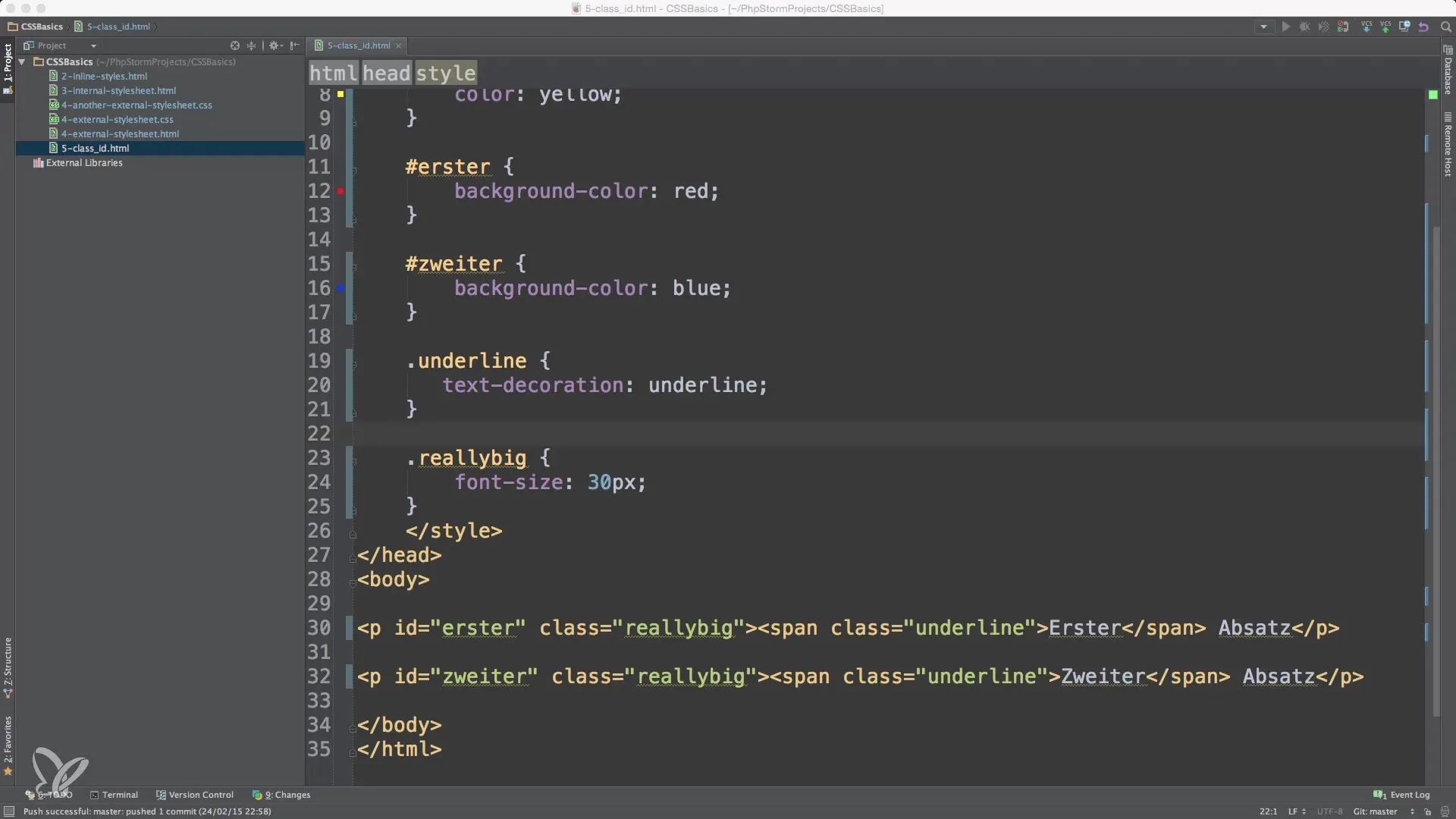
You can assign specific styles to the class.container, for example, to determine the background or add margins.
8. Conclusion on Styles and Structure
Effectively working with class and id is crucial for designing web pages. It allows you to keep your style definitions neat and readable while also giving you the flexibility to make specific adjustments.
Summary – Fundamentals of HTML Attributes: class and id
In this guide, you received a comprehensive overview of how to effectively utilize the HTML attributes class and id. From the unique identification of elements to the grouping of styles, you now have the knowledge to further enhance and make your web pages more efficient.
Frequently Asked Questions
How do I define an id in HTML?You can add an id by writing id="yourIdName" to an HTML element.
Can I add multiple elements to a class?Yes, a class attribute can be applied to multiple elements.
What happens if I use an id multiple times in the document?That is not allowed; each id must be unique.
What does the CSS syntax for a class look like?The syntax starts with a dot followed by the class name, e.g.,.myClass {}.
Can I use a class and an ID at the same time?Yes, that is common practice to create specific styles.


